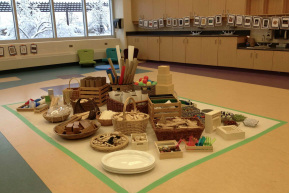 our loose-parts picnic
our loose-parts picnic  choosing their materials
choosing their materials 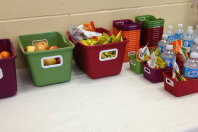 SnakPaks
SnakPaks  wordless provocations
wordless provocations 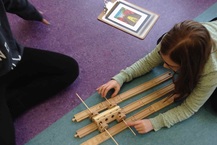
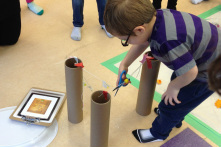 Cut the Rope
Cut the Rope | |
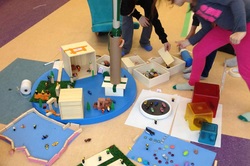 collaborative city
collaborative city In an effort to make our own learning visible, we had a few struggles of our own. We had envisioned a cozy snack corner for the children where they could step away from their work, load up on energy, and allow their creativity to percolate. This worked well initially – until a group of kids recognized the creative possibilities of the colourful round table-top on the floor. While their use of the table-top effectively shut down our snack area, we can't deny that their 5-way multi-age, multi-gender collaboration blew everyone away. So while we saw the big round blue thing as the perfect snack table, it turns out it was also the ideal base for building an elaborate city!
And finally, we were surprised by an exchange we had with an onlooker at the community centre who announced that it all seemed like "way too much work and totally not worth it." Although we welcome a wide range of opinions as a way to expand our own thinking, we were taken aback by the comment until we realized that this individual didn’t have a child in the room and hadn’t witnessed any of the creative transformations. Seen through the lens of a child, educator or parent, this person would have seen what we saw: that anyone can be inspired; that a single learning environment can serve multiple ages, stages and abilities; and that you can awaken parents’ curiosity to learning through witnessing their children at play.

thinkined.com

 RSS Feed
RSS Feed



